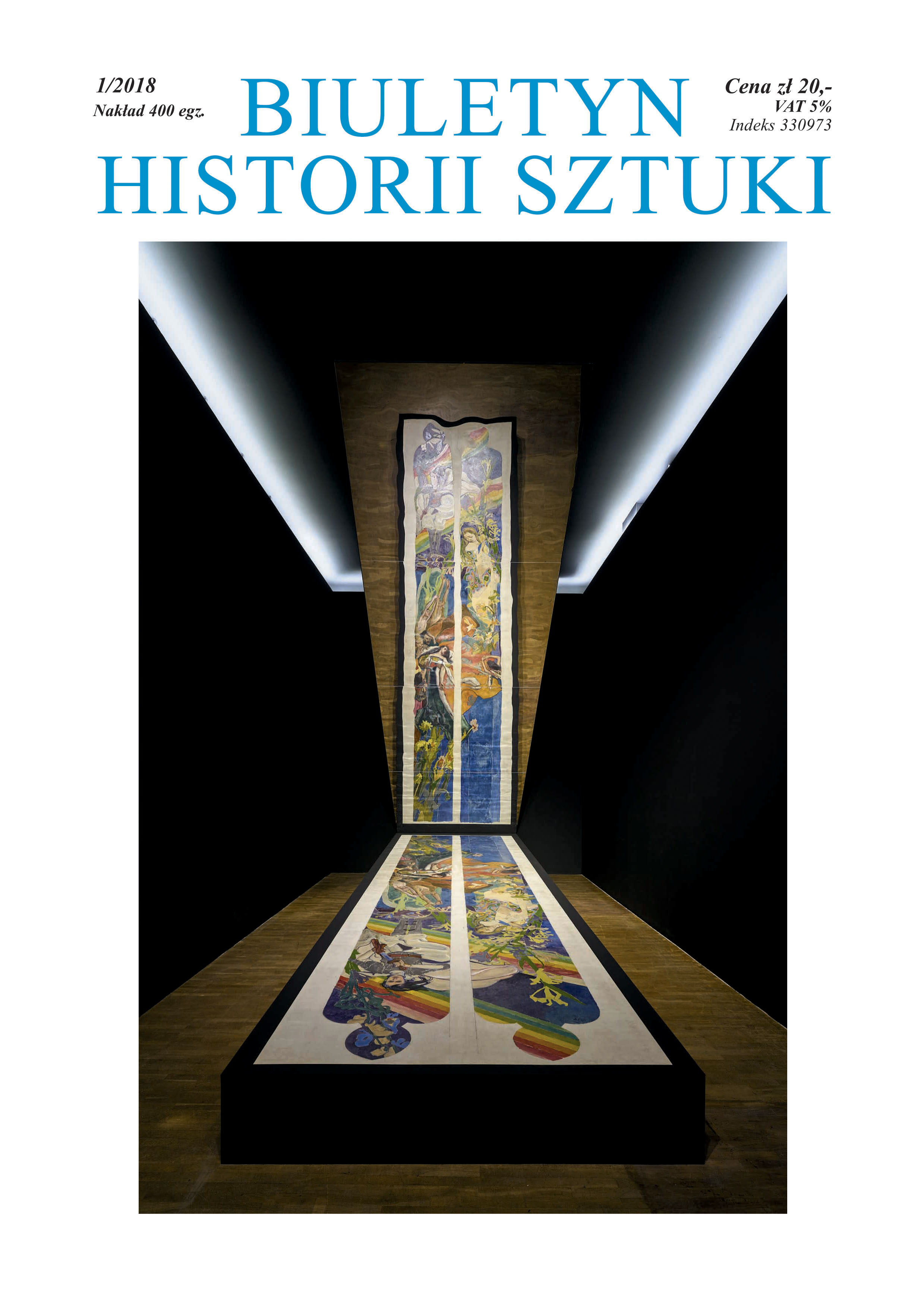Malarz Joseph Prechtl. Przyczynek do monografii artysty
The Painter Joseph Prechtl. Contribution to the Artist’s Monograph
Author(s): Mirosława Sobczyńska-SzczepańskaSubject(s): Fine Arts / Performing Arts, Visual Arts, History of Art
Published by: Instytut Sztuki Polskiej Akademii Nauk
Keywords: Joseph Prechtl (painter); baroque wall painting; Trinitarian Order;
Summary/Abstract: The Painter Joseph Prechtl (Brother Joseph of St Theresa). Contribution to the Artist’s Monograph The painter Joseph Prechtl (Vienna 1737 – Brahiłów 1799), in the Trinitarian Order lay Brother Joseph of St Theresa, active mainly in Lesser Poland, Volhynia, the Zamość Land, and Podolia, created about 130 easel paintings and some dozen monumental decorations. His scarce preserved works and those known merely from archival photographs, allow to consider him one of the most outstanding painters active on the territories of the Polish-Lithuanian Commonwealth in the latter half of the 18th century. In the paper the views on the beginnings of the artist’s career have been verified; moreover, the revision of the works attributed to him, completed with new attributions, has been conducted, with their dating having been made more precise. In the light of the monastic sources, Joseph Prechtl arrived in the Polish-Lithuanian Commonwealth neither in 1757 nor in 1758 as had been assumed, but in 1754. He joined the Trinitarian Order in Lviv on 20 September 1754, however initiating his novitiate only in March 1757. Therefore, it can be concluded that he participated in the works on the decoration of the Lviv Triniatarian Church of the Holy Trinity, started at the latest in 1753 and headed by Stanisław Stroiński at least as of spring of 1756. Following his novitiate and monastic vows on 4 March 1758, he went to Cracow where he assisted Joseph Franz Piltz in creating the fresco decoration of the Order’s church there. It is to the early 1760s that his oil paintings: Immaculata and St Thecla of the Mielec Trinitarian monastery have to be dated. The unpreserved polychrome of the monastic church in Tomaszów Lubelski may have been executed around the same time. After 1764, a polychrome associated with Joseph Prechtl and Stanisław Stroiński in the Bernardine church in Dubno was created. In 1766, Brother Joseph was busy working for the Trinitarian Convent in Cracow (frescoes in the refectory and sacristy, oil painting St John of Matha), following which he worked for the Trinitarian Convent in Tomaszów Lubelski (oil paintings: St Cajetan of Thiene, St Anthony of Padua, and Immaculata), as well as in Lutsk (fresco on the library vault, over 30 oil paintings). The Trinitarian friar may have authored the polychrome of the Trinitarian church in Bursztyn from 1769-70. In 1773, he decorated the Dominican church in Szarawka with frescoes, while in the mid-1770s, he created the decoration of the Trinitarian church in Kamieniec Podolski. From ca 1776 to 1778, he created a polychrome in the Beresteczko church and 16 retable paintings. Jan Jakub Zamoyski, as of 1765 owner of Beresteczko, certainly did remain impressed by the church’s furnishing; in 1779-84, he commissioned Prechtl to execute a fresco decoration in the Łabunie palace, in the Parish Church of St Stanislaus and in the nunnery of the Daughters of Charity of St Vincent de Paul in Gródek Bedrychowski, as well as the paintings of Resurrected Christ and St Thomas for the high altar of the Collegiate Church in Zamość. In around 1785, the Trinitarian worked for his Order in Brahiłów (church polychrome, 20 retable paintings, around 30 paintings at the monastery). It was most likely in the 2nd half of the 1780s that his works for the cathedral churches in Kamieniec Podolski (two trompe- l’oeil paintings for side altars, the oil paintings: St John of Nepomuk and Holy Trinity) and Lutsk (the oil paintings: St John of Nepomuk and St Reces), as well as for the Parish Church of St Michael Archangel in Hołoby (possibly the polychrome of the presbytery and the nave were created). The Trinitarian Church in Krotoszyn was enriched with the oil paintings: Blessed Simón de Roxas and the Mystical Heart Being Swapped between Christ and Blessed Michael of the Saints, painted in 1779 at the earliest. It is known that Brother Joseph of St Theresa had his secular disciples who, having become independent artists, soon won fame as good painters. Several years before his death, the artist gave up painting due to his eye illness.
Journal: Biuletyn Historii Sztuki
- Issue Year: 80/2018
- Issue No: 1
- Page Range: 49-86
- Page Count: 38
- Language: Polish
- Content File-PDF

